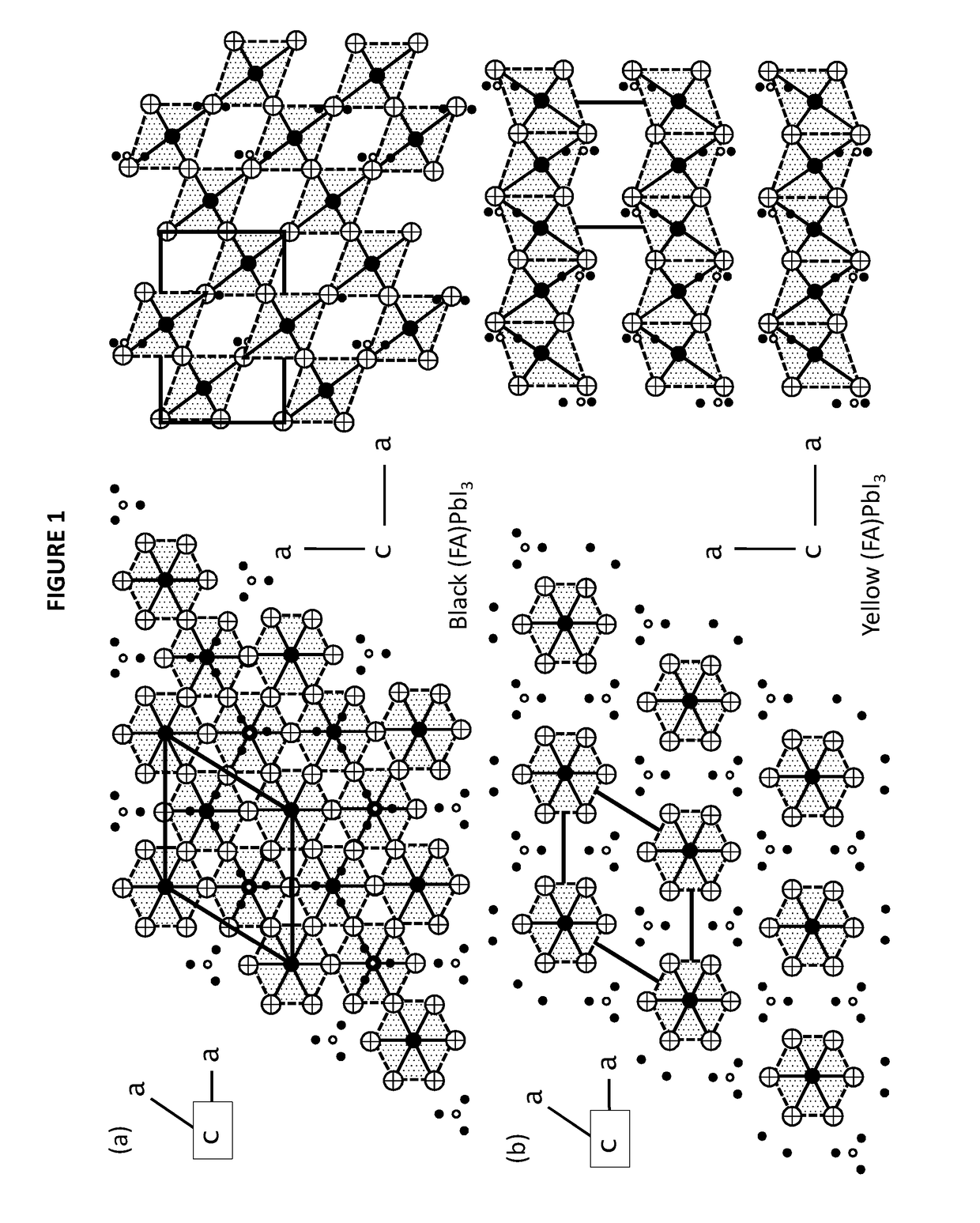Mixed organic-inorganic perovskite formulations
a technology of organic and inorganic perovskite, which is applied in the field of mixed organicinorganic perovskite formulations, can solve the problems of high cost of manufacturing devices that capture solar energy, high material cost, and historically impede the widespread use of solar energy, and achieve the ability to use these compounds
- Summary
- Abstract
- Description
- Claims
- Application Information
AI Technical Summary
Benefits of technology
Problems solved by technology
Method used
Image
Examples
examples
[0129]Materials.
[0130]In the exemplary embodiments detailed below, unless otherwise stated, all materials were purchased from Sigma-Aldrich or Alfa Aesar and used as received. Spiro-OMeTAD was purchased from Lumtec.
[0131]Perovskite precursor synthesis: Formamidinium iodide (FAI) were synthesised by dissolving formamidinium acetate powder in a 2× molar excess of 57% w / w hydroiodic acid (for FAI). After addition of acid the solution was left stirring for 10 minutes at 50° C. Upon drying at 100° C., a yellow-white powder is formed. This was then washed with diethyl ether and recrystallized twice with ethanol, to form white needle-like crystals. This was previously demonstrated by Eperon et al. Before use, it was dried overnight in a vacuum oven. The methylammonium iodide (MAI) was synthesised according to literature methods.
[0132]To form FAPbI3 precursor solutions, FAI, MAI and PbCl2 (or PbI2) were dissolved in anhydrous N,N-dimethylformamide (DMF) or dimethylsulfoxide, (DMSO) in the v...
PUM
| Property | Measurement | Unit |
|---|---|---|
| band gap | aaaaa | aaaaa |
| band gap | aaaaa | aaaaa |
| temperature | aaaaa | aaaaa |
Abstract
Description
Claims
Application Information
 Login to View More
Login to View More - R&D
- Intellectual Property
- Life Sciences
- Materials
- Tech Scout
- Unparalleled Data Quality
- Higher Quality Content
- 60% Fewer Hallucinations
Browse by: Latest US Patents, China's latest patents, Technical Efficacy Thesaurus, Application Domain, Technology Topic, Popular Technical Reports.
© 2025 PatSnap. All rights reserved.Legal|Privacy policy|Modern Slavery Act Transparency Statement|Sitemap|About US| Contact US: help@patsnap.com



